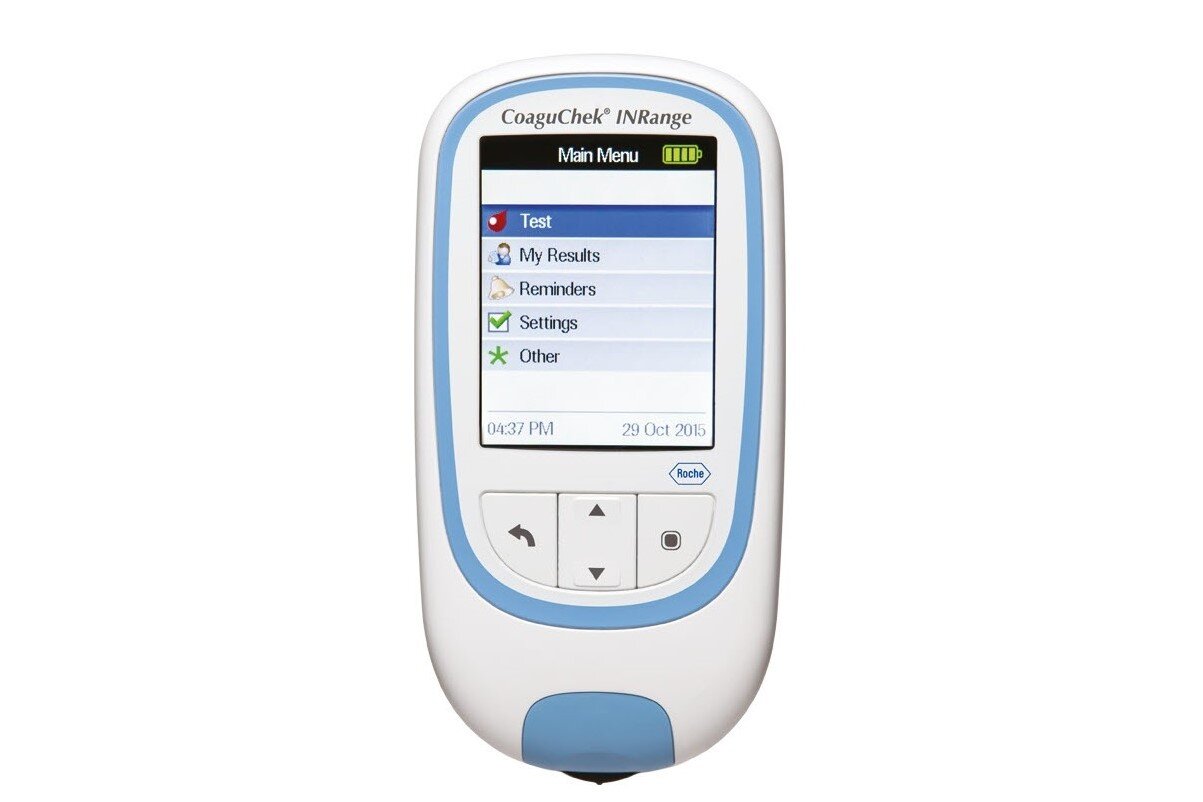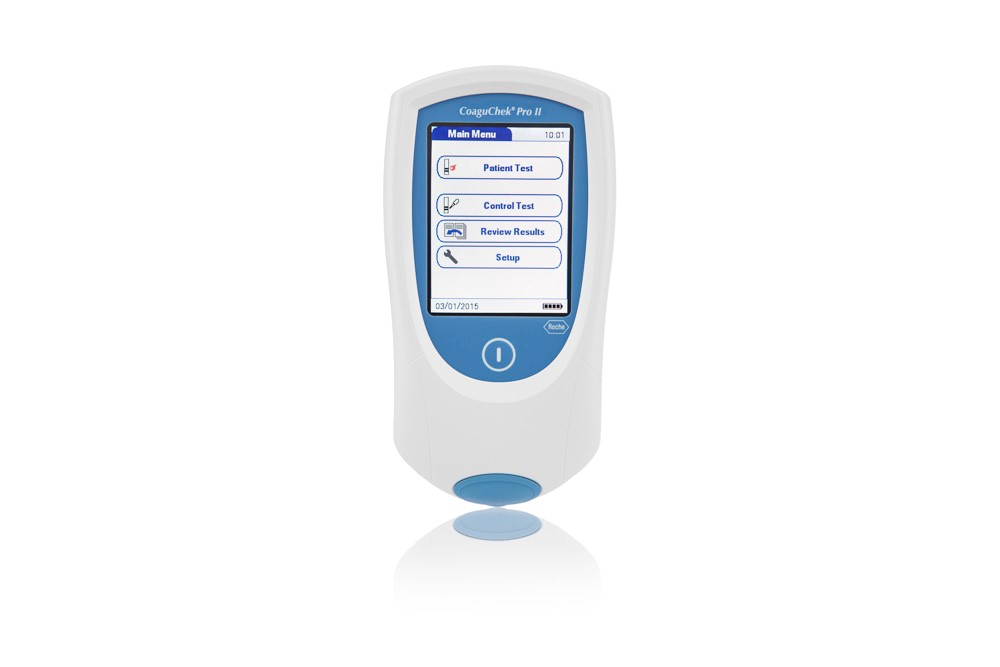For localized information and support, would you like to switch to your country-specific website for {0}?
Coagulation self-testing can reduce visits to the clinic and improve time in the therapeutic range1-5
Since 1992, CoaguChek® by Roche Diagnostics, has led the way in Point of Care (POC) testing, developing innovative solutions in coagulation monitoring for both professionals and patients alike. As a market leader in POC International Normalized Ratio (INR) monitoring solutions, CoaguChek®, has played a vital role in anticoagulation therapy, particularly for patients on Vitamin K Antagonist (VKA) medications such as warfarin.
Patient Self Testing of INR has emerged as a resounding success story. Patients managed with POC testing achieve a higher time in therapeutic range and fewer values out of range compared with patients treated with usual care.1-3 This results in fewer treatment-related complications,4,5 fewer hospitalizations and emergency department visits,4,5 and improved patient satisfaction.6-8
Despite the advent of Direct Oral Anticoagulants (DOACs), which have become the preferred choice for many patients, there remains a crucial segment for whom DOACs are not suitable. For these patients, CoaguChek® continues to be the cost-effective and proven INR monitoring solution, ensuring reliable and personalized care.

CoaguChek® solutions for the Point of Care
Performed by healthcare professionals immediately at the patient's point of care. CoaguChek® offers reliable and easy-to-use solutions that provide immediate results, allowing treatment decisions to be made promptly.
Featured products
References
- Harrison et al. (2015). Int J Pharm Pract. 23, 173-181.
- Okuyama et al. (2014). Circ J. 78, 1342-1348.
- Mearns et al. (2014). Thromb J., 12:14.
- Karlsson. (2016). BMJ Qual Improv Rep. 5, pii.w4421.
- Kong et al. (2008). Ann Hematol. 87, 905-910.
- Chan et al. (2006). Br J Clin Pharmacol. 62, 601-609.
- Thompson et al. (2009). Pharm Pract (Granada) 7, 213-217.
- Wurster & Doran. (2006). Dis Manag. 9, 201-209.



